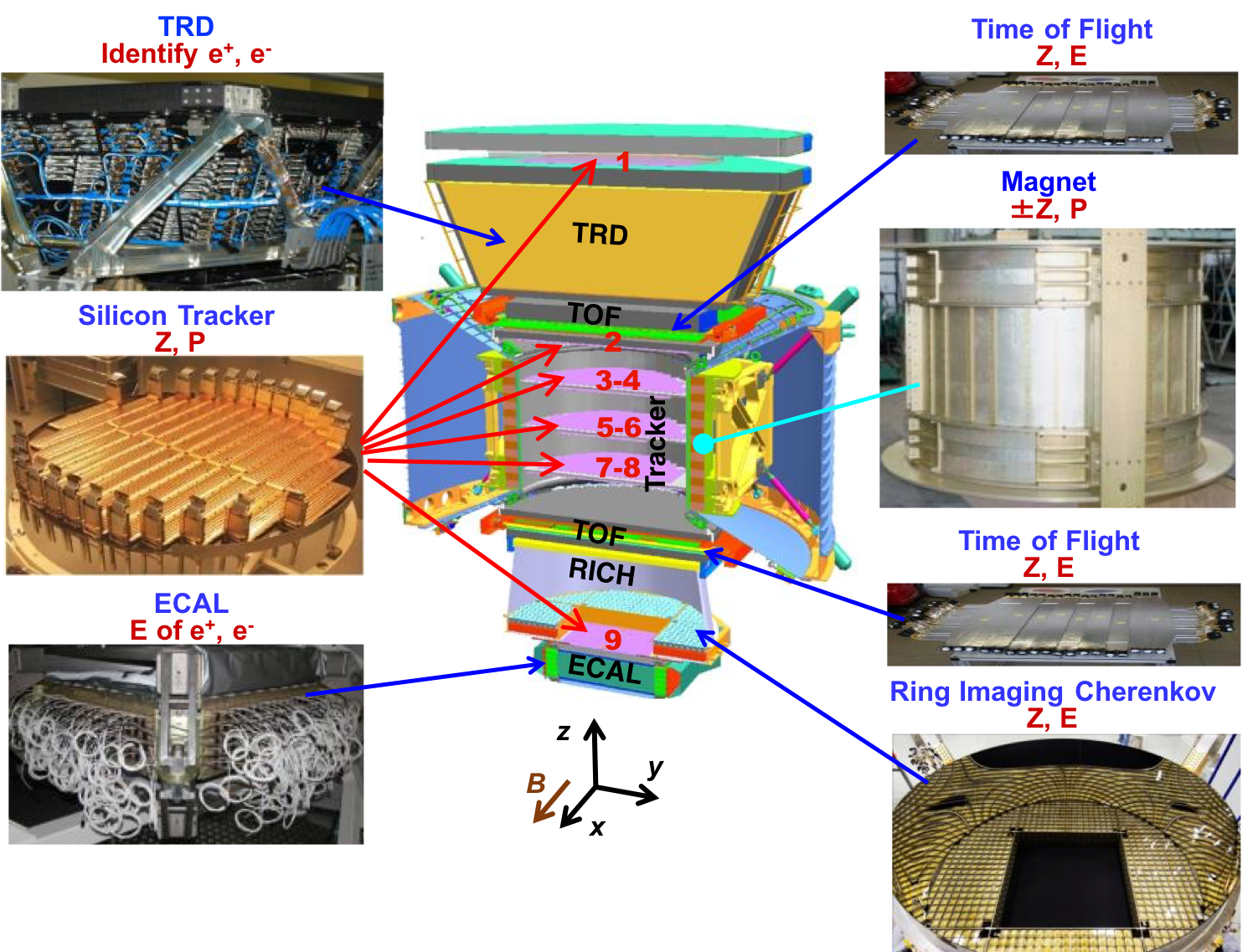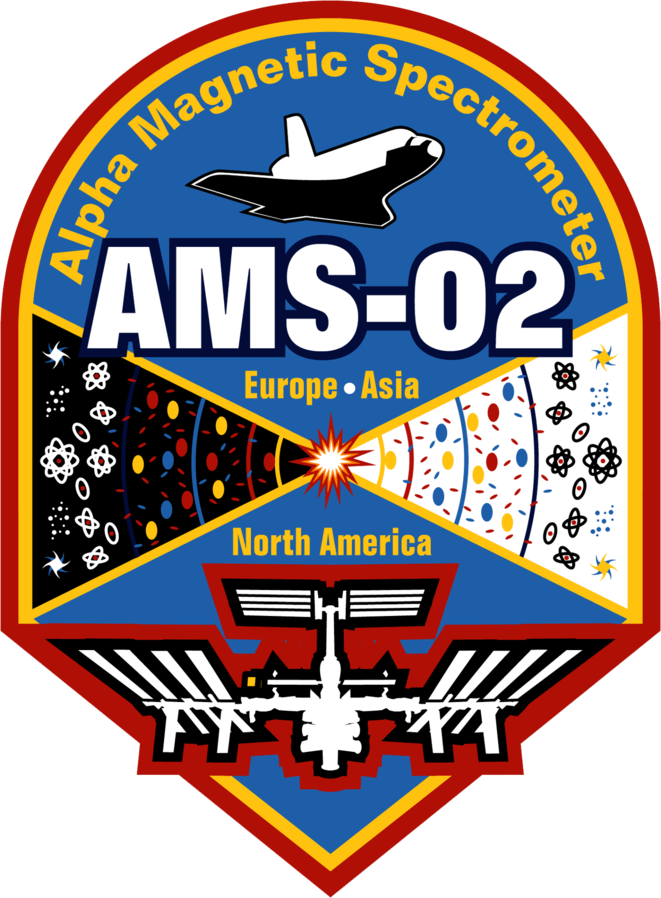AMS-02 Detector
The objectives of AMS on the ISS include the search for antimatter, investigating the origin of dark matter, and the precision study of cosmic rays, as well as the exploration of new phenomena in the Universe. AMS, as the first precision particle physics detector in space, is exploring the field of space physics with an unprecedented accuracy of ~1% and up to the TeV energy region. AMS will continue to explore a new frontier in particle physics over the lifetime of the International Space Station. The most exciting objective of AMS is to explore the unknown with a precision instrument.

As seen in Figure 1, the AMS detector consists of a permanent magnet surrounded by an array of particle detectors to measure the momentum and charge of the passing particles and nuclei. The Transition Radiation Detector (TRD) is located at the top of the AMS. Its purpose is to identify electrons and positrons by Transition Radiation while rejecting protons at a level of 103 and to distinguish nuclei by their rate of energy loss (dE/dx). Within the magnet bore and above and below the magnet are a total of 9 precision silicon tracker planes, L1 to L9, with 200,000 channels aligned to 5 microns. The purpose of the tracker, together with the magnet, is to measure the sign of the charge and momentum of the particles with unprecedented accuracy (a coordinate resolution of 5 microns for Z=6 and 10 microns for Z=1 particles over a lever arm of 3 m). The AMS coordinate system is concentric with the center of the Magnet. The x-axis is parallel to the main component of the magnetic field and the z-axis points vertically. The (y–z) plane is the bending plane.
Above and below the magnet bore are the Upper and Lower Time of Flight (TOF) counters. The purposes of this detector are to provide a charged particle trigger to AMS, to determine the direction and velocity of incoming particles and to measure their charge via dE/dx. Anti-Coincidence Counters (ACC or Veto), with a measured efficiency of 0.99999, surround the tracker in the magnet bore. They reject cosmic rays entering AMS from the side. Below the Lower Time of Flight counters are the Ring Image Cherenkov counter (RICH) and Electromagnetic Calorimeter (ECAL). The RICH, with its 10,880 photo-sensors, measures the charge and velocity of passing particles. Both are calculated from the geometrical shapes, circles or rings, generated by the Cherenkov effect. It consists of two radiators. The central radiator is formed by 16 sodium fluoride, NaF, tiles with a refractive index n = 1.33. These are surrounded by 92 tiles of silica aerogel with a refractive index n = 1.05. This allows the detection of particles with velocities β > 0.75 with the NaF radiator and β > 0.953 with the aerogel radiator. The RICH measures particle velocities with an accuracy of better than 0.1%. The ECAL is a 3-dimensional imaging instrument made of 1,200 lbs of lead sandwiched with 50,000 scintillating fibers, providing a shower measurement with 17 radiation lengths (X0) and 1296 measuring cells. It measures the energy and direction of trillion electron volt (TeV) positrons and electrons with high precision. The ECAL energy resolution is ~2% and the angular resolution is 0.5° for E>100 GeV. Together, the ECAL and the tracker separate protons from electrons and positrons at the level of 104.

In total there are 300,000 electronics channels read-out and processed by 650 microprocessors to provide data reduction of ~1000 without loss of physics information. The average transmission rate from AMS on the Space Station to the ground is 10 Mbit/s.
The separation of the TRD and the ECAL by a magnetic field ensures that secondary particles generated in the TRD are swept away by the magnet and do not enter into the ECAL. In this way the rejection powers of the two detectors are independent.
Before launch to the ISS, AMS was tested extensively at the CERN test beam with electrons, positrons, protons, and pions (to simulate high energy protons). In total, more than 2000 combinations of particles, energies, incident angles and locations were tested. The measured (electron/positron)-to-proton rejection at 400 GeV/c was larger than 106. The test beam results are used with AMS in space to monitor the detector performance and also in the data analysis to verify the quality of the data from space.
AMS on ISS, see Figure 2, has functioned reliably and the properties of the detector have not changed compared to its original calibration at the CERN accelerator before launch. This ensures the quality and accuracy of the data being analyzed.
AMS on the ISS
AMS-02 flew on the mission STS-134, on board of the shuttle Endeavour and is mounted on the upper Payload Attach Point on S3 Truss of the International Space Station (ISS).

